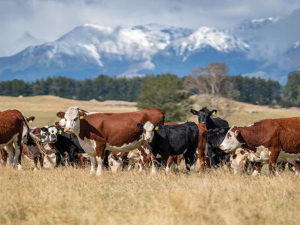DairyNZ developer animal care and biosecurity, Katherine DeWitt on the new tail shortening laws and better options for tail management.
I've seen first-hand on farm how many farmers pride themselves on taking good care of their animals.
That is reinforced by the dairy sector’s commitment to animal care set out in the Dairy Tomorrow strategy. The goal? To be world leading in animal care.
Many farmers are working hard to achieve this goal. It attracted me from the US to be a part of the New Zealand dairy sector.
I’m impressed by how many farmers have made changes to improve animal welfare on farm, even before regulations came into force.
Take tail shortening, for example. From this October, removing the last two-three vertebrae of a cow’s tail will be prohibited. But a vet will still be allowed to shorten or dock a tail under local anaesthetic if it is damaged or diseased.
We know from our interactions with farmers that most of you stopped shortening tails long ago. This is great as it is painful for the cow, and extensive research shows it does not improve udder hygiene, or reduce mastitis and somatic cell count.
Better options for tail management
Good hygiene, stockmanship and vaccination programmes have been found to be a much more effective option.
A cow’s tail actually provides a range of benefits, including allowing her to swat away flies and communicate intentions and moods to herd mates and handlers.
Trimming a cow’s tail hair, or switch, is allowed under the new regulations. This is a good option to help maintain udder health and keep cows’ udders and milkers’ faces clean, while still allowing cows to deter flies.
Tails can be trimmed using hand shears, scissors or electric trimmers.
It’s up to you and your farm team to decide what works best for your farm system.
Visit www.dairynz.co.nz/tail-management. Or to find out more about the new tail shortening regulations visit www.mpi.govt.nz
Tomorrow's vision
New Zealand will be world leading in on farm animal care (one of the six commitments and goals in the sector strategy).
This means the sector will:
Develop and implement a framework that ensures every animal is valued and treated with care and respect.
By 2023 have all farmers implementing and reporting under the framework.
For more about the strategy visit
www.dairytomorrow.co.nz
• Katherine DeWitt is DairyNZ developer animal care and biosecurity.


















